How to Choose the Best Packaging for Supplements

Founder of UKPACK, Chief Packaging Designer with 18 years of experience, Red Dot Award Winner
Specialize in custom, innovative, and sustainable packaging solutions for cosmetics, skincare, personal care, hair care, food and beverage, and more.
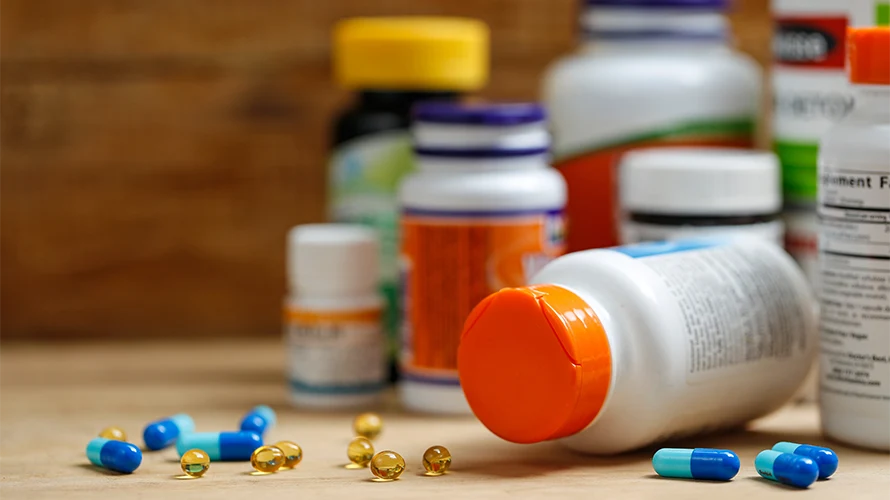
Choosing the best packaging for your supplements can be a daunting task. With so many options available, how do you know which one is the right fit for your product? Let’s dive deep into the world of supplement packaging to help you make an informed decision that not only protects your product but also appeals to your customers.
Understanding Your Product
Types of Supplements
First things first, what type of supplement are you packaging? Vitamins, minerals, protein powders, herbal supplements—all have different packaging needs. Knowing the specifics of your product will guide your packaging choices.
Sensitivity to Light, Air, and Moisture
Supplements vary in their sensitivity to environmental factors. Some are highly sensitive to light, air, and moisture, which can degrade their quality. Consider packaging that offers robust protection against these elements.
Shelf Life
The shelf life of your supplement is another crucial factor. Packaging should help extend the shelf life by providing a stable environment that prevents degradation.
Material Choices for Supplement Packaging
Plastic Packaging
Plastic is a popular choice due to its durability and versatility. It’s lightweight and can be molded into various shapes and sizes, making it ideal for bottles and jars.
Glass Packaging
Glass offers excellent protection against air and moisture. It’s also inert, meaning it won’t react with the supplements. However, it’s heavier and more fragile than plastic.
Metal Packaging
Metal, especially aluminum, is used for its excellent barrier properties. It’s great for powders and effervescent tablets, providing a strong barrier against moisture and light.
Biodegradable and Eco-friendly Options
With the growing demand for sustainable solutions, biodegradable and eco-friendly packaging is becoming more popular. These materials reduce environmental impact and appeal to eco-conscious consumers.
Types of Supplement Packaging
Bottles
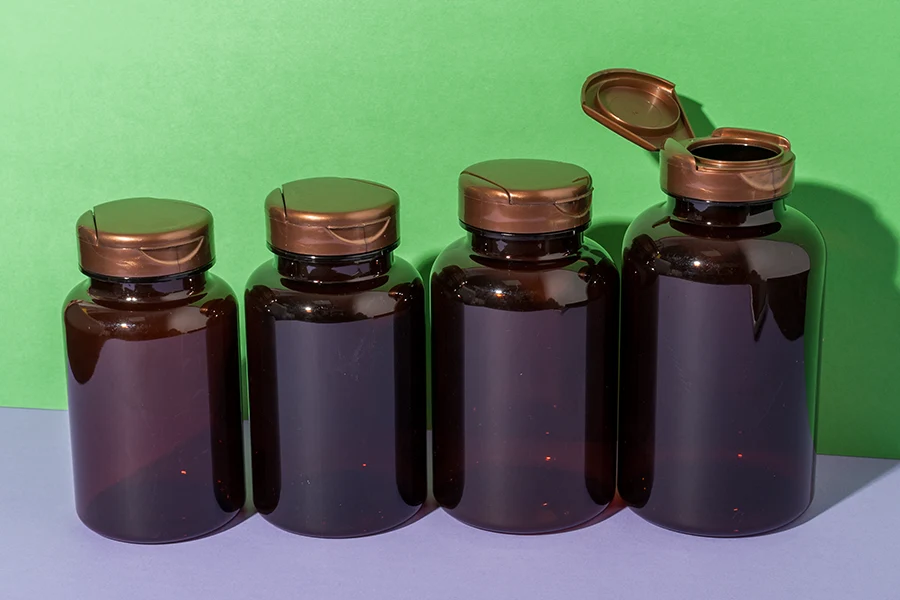
Bottles are the preferred packaging for a wide array of supplements, including liquids, tablets, and gummies, due to their robust construction and ability to safeguard against moisture, oxygen, pests, and physical damage. They are available in various materials such as clear PET plastic, opaque or tinted HDPE or PP plastic, and clear or colored glass. Transparent bottle materials like PET or glass allow consumers to visually inspect the product, enhancing their confidence in its quality and integrity.
Jars
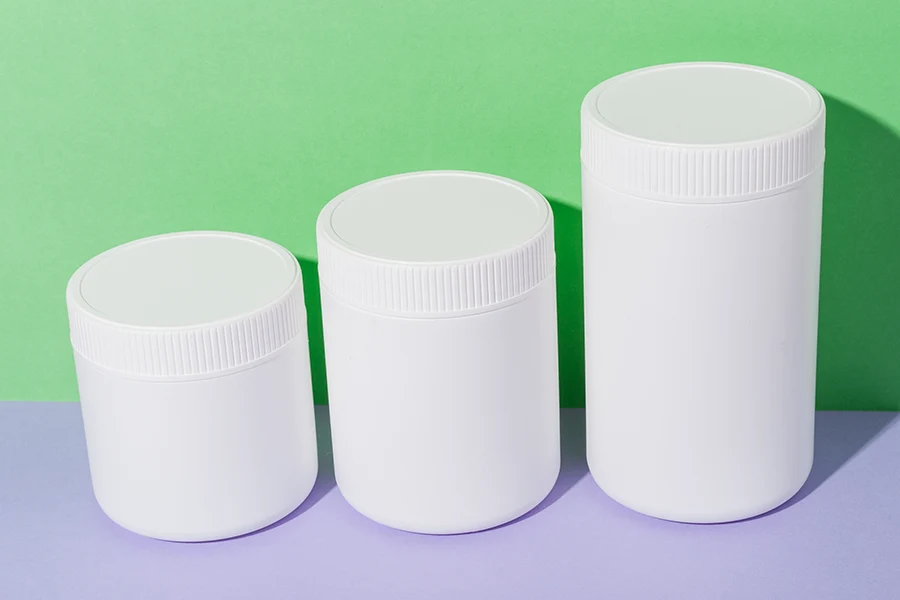
Jars are a versatile packaging option for supplements, featuring a wide opening that matches the jar’s diameter, making them ideal for powders, gummies, and tablets. The broad opening not only simplifies access but also accommodates scoops, aiding in precise portioning for consumers. This packaging design boosts convenience and maintains the freshness and protection of the contents.
Blister Packs
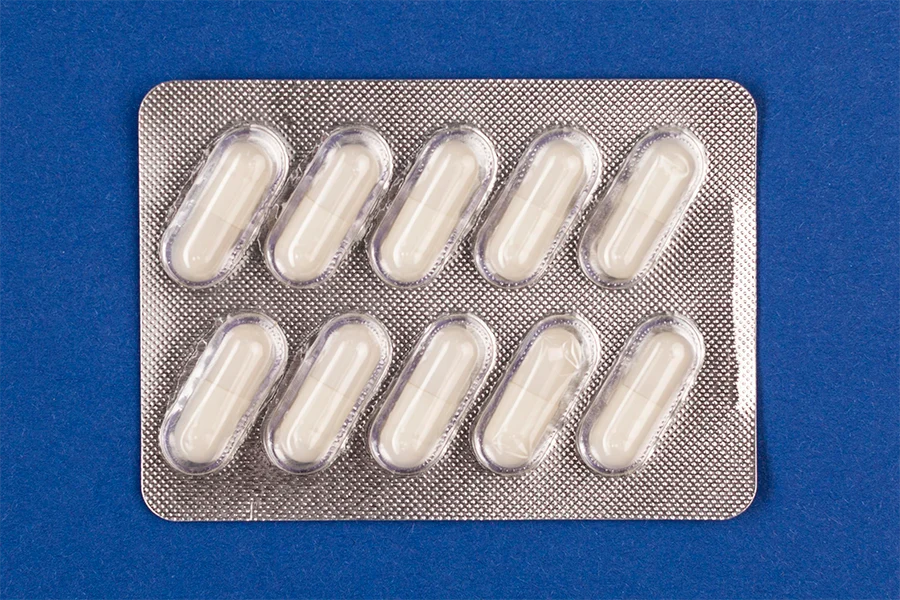
Blister packs provide robust protection against moisture, air, and light, safeguarding the efficacy of single-dose supplements. Each pill or capsule is individually sealed in a plastic bubble attached to a cardboard backing, ensuring accessibility and integrity. The convenience of blister packs, with their compact size and clear visibility, enhances consumer usability and extends the safety and shelf-life of the supplements.
Pouches
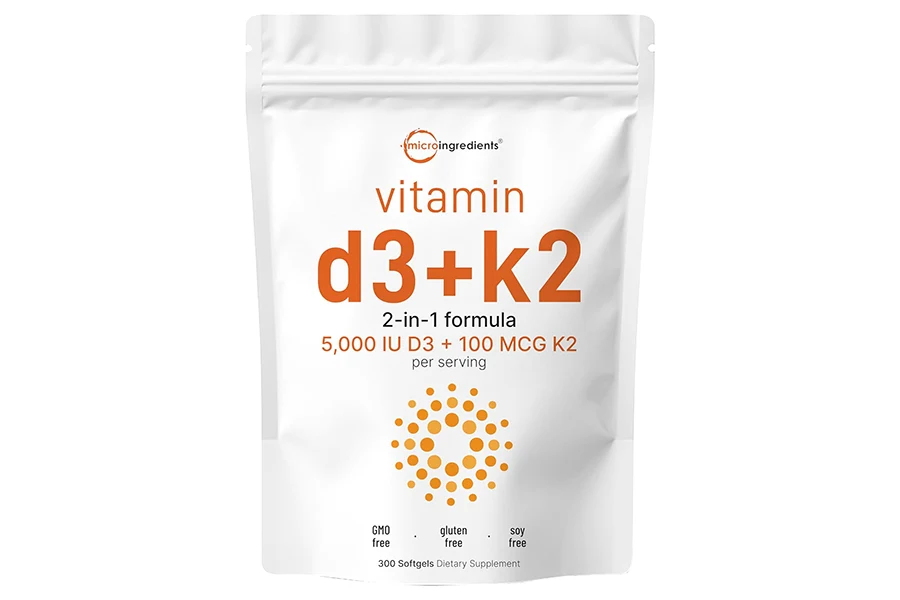
Pouches are ideal for powders and large supplements, offering a lightweight, space-efficient, and flexible packaging solution. Their resealable design is essential for preserving the freshness and potency of the contents by preventing exposure to air and moisture. Customizable with clear windows or opaque materials, pouches meet specific light protection needs while enhancing user convenience and maintaining product quality.
Stick Packs
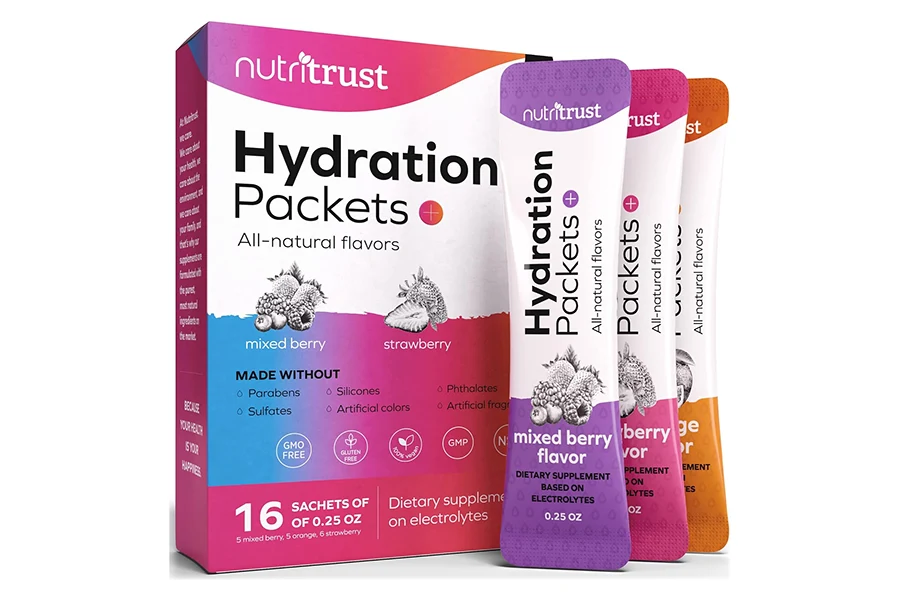
Stick packs are designed for single-serve supplements, offering convenience and portability for on-the-go consumers. Their compact size ensures accurate portioning and freshness, while minimizing packaging waste. The ease of opening and consuming the contents directly or in a beverage makes stick packs a popular choice among health-conscious individuals seeking convenience without sacrificing quality.
Labeling and Branding
Importance of Clear Labeling
Labels need to be clear and informative. They should include all necessary information such as ingredients, usage instructions, and expiration dates.
Regulatory Requirements
Ensure your labeling complies with regulatory requirements. This includes correct ingredient listing, health claims, and nutrition facts.
Design and Brand Identity
Your packaging should reflect your brand’s identity. Use colors, fonts, and graphics that resonate with your target audience.
Consumer Convenience
Easy-to-Open Features
Make sure your packaging is user-friendly. Easy-to-open features enhance the user experience and can be a selling point.
Portability
Consumers appreciate packaging that is easy to carry. This is especially important for on-the-go supplements.
Resealable Packaging
Resealable options keep the product fresh and make it easier for consumers to use and store.
Safety and Security
Tamper-Evident Features
Tamper-evident features are crucial for ensuring product safety. They give consumers peace of mind that the product hasn’t been compromised.
Child-Resistant Packaging
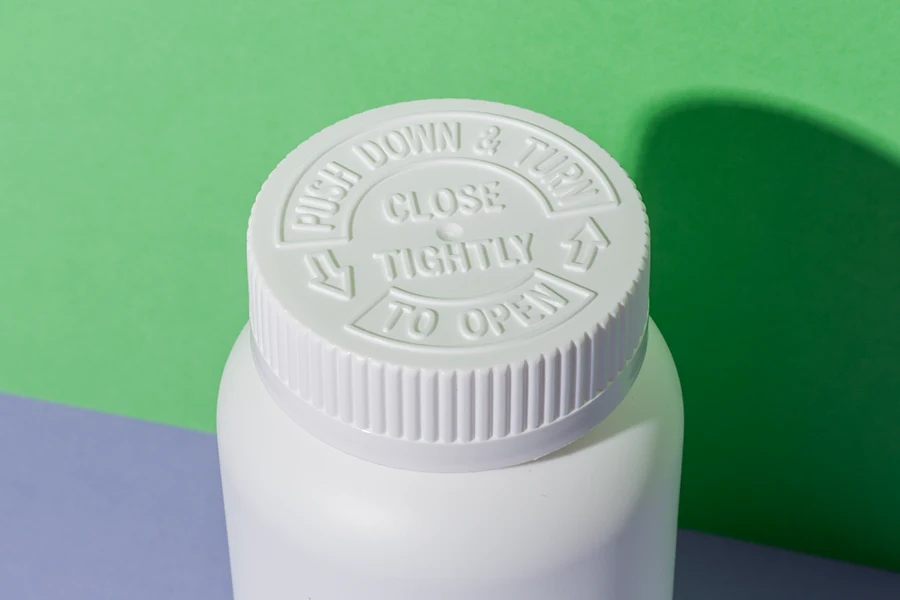
If your supplement could pose a risk to children, child-resistant packaging is a must. It prevents accidental ingestion by making it difficult for children to open.
Ensuring Product Integrity
Overall, the packaging should maintain the integrity of the supplement from production to consumption. It should protect against contamination and damage.
Sustainability Considerations
Environmental Impact
Consider the environmental impact of your packaging. Opt for materials that are recyclable or biodegradable to reduce your carbon footprint.
Recyclable Materials
Using recyclable materials not only helps the environment but can also be a selling point for eco-conscious consumers.
Reducing Packaging Waste
Aim to minimize packaging waste. This can be achieved through efficient design and using materials that require less energy to produce.
Cost Factors
Balancing Quality and Cost
Finding the right balance between quality and cost is crucial. High-quality packaging might be more expensive but can offer better protection and appeal.
Economies of Scale
Ordering in bulk can reduce costs due to economies of scale. Work with your supplier to find the best pricing strategy.
Supplier Negotiations
Don’t hesitate to negotiate with suppliers. Building a good relationship can lead to better deals and terms.
Compliance with Regulations
FDA Guidelines
Ensure your packaging complies with FDA guidelines. This includes proper labeling and ensuring the materials are safe for use with supplements.
International Standards
If you’re selling internationally, make sure your packaging meets the standards of each country. This can prevent legal issues and ensure smooth market entry.
Labeling Requirements
Adhere to all labeling requirements to avoid penalties and build consumer trust. This includes ingredient lists, health claims, and usage instructions.
Aesthetics and Marketing Appeal
Eye-Catching Designs
Your packaging should stand out on the shelf. Use eye-catching designs that draw consumers’ attention and convey your brand message.
Color Psychology
Colors can influence consumer behavior. Choose colors that evoke the desired emotions and align with your brand.
Customer Preferences
Understand your customers’ preferences. Conduct market research to learn what appeals to them and incorporate those elements into your packaging.
Technology Integration
QR Codes and Smart Packaging
Integrate QR codes and smart packaging to engage consumers. This can provide additional information, usage tips, or promotional offers.
NFC Tags
Near Field Communication (NFC) tags can enhance user experience by enabling interactive features such as product authentication and information access.
Tracking and Authenticity
Smart packaging can also help track products and ensure authenticity, which is especially important for high-value supplements.
Market Research
Analyzing Competitor Packaging
Study your competitors’ packaging. This can provide insights into what works and what doesn’t, helping you make informed decisions.
Consumer Feedback
Listen to consumer feedback. It can highlight areas for improvement and help you create packaging that better meets their needs.
Trends in Supplement Packaging
Stay updated on the latest trends in supplement packaging. This can keep your product relevant and appealing in a competitive market.
Testing and Quality Assurance
Durability Testing
Ensure your packaging is durable. Conduct tests to see how it holds up under various conditions.
Environmental Testing
Test your packaging against environmental factors such as temperature, humidity, and light to ensure it provides adequate protection.
User Testing
Conduct user testing to gather feedback on your packaging. This can help identify any issues and make necessary adjustments.
Conclusion
Choosing the best packaging for your supplements involves careful consideration of various factors, from material choices to consumer convenience and regulatory compliance. By understanding your product’s needs and keeping up with industry trends, you can select packaging that not only protects your product but also appeals to your customers. Now, through this article, you know how to choose the best packaging for supplements.
But how do you find a trustworthy supplier? Fortunately, UKPACK is a professional packaging solution supplier, offering a one-stop supplement packaging solution for your brands. With our expertise and comprehensive services, we can help you find the perfect packaging that meets your needs and exceeds your expectations. Contact us now!
FAQs
Q1. What are the most eco-friendly packaging options for supplements?
Biodegradable and recyclable materials, such as certain plastics, glass, and cardboard, are some of the most eco-friendly options.
Q2. How do tamper-evident features work?
Tamper-evident features show visible signs if the packaging has been opened or altered, providing assurance to consumers about the product’s integrity.
Q3. What should be included on a supplement label?
A supplement label should include the product name, ingredients, usage instructions, expiration date, and any necessary health warnings.
Q4. Why is child-resistant packaging important?
Child-resistant packaging prevents children from accessing potentially harmful supplements, reducing the risk of accidental ingestion.
Q5. How can smart packaging benefit my supplement brand?
Smart packaging can enhance user engagement, provide additional information, ensure product authenticity, and improve tracking.
